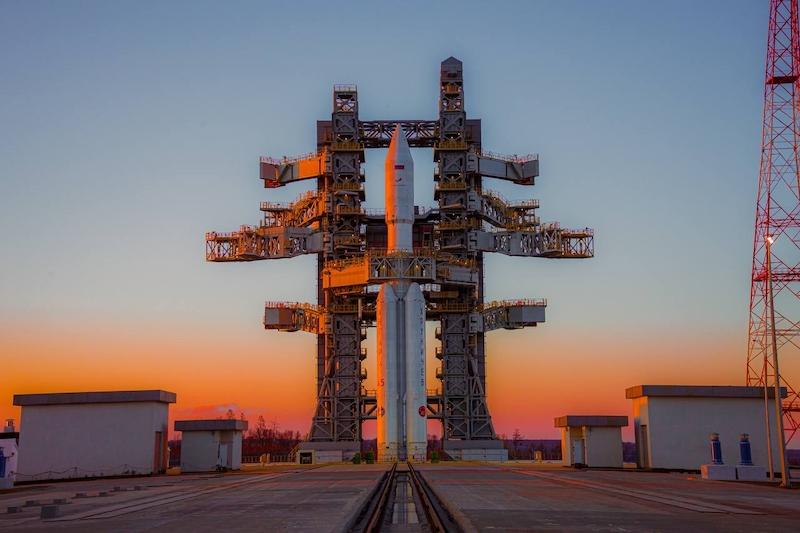Pressurization System Issue Nixes Angara A5 Vostochny Debut Launch

Angara A5 on the new launchpad in Vostochny.
The flight of a Russian Angara A5 heavy-lift rocket from the Vostochny Cosmodrome was automatically aborted 2 min. before the planned 5:00 a.m. EDT April 9 liftoff.
The reason for the halt was a failure of the oxidizer tank pressurization system in the central block, Yury Borisov, the head of Roscosmos state space corporation, told reporters.
Launch has been rescheduled for April 10.
Angara A5 is set to carry a dummy payload, as the primary goal of the first flight is to test the new launchpad at Vostochny, located in Russia’s far east. The rocket was installed on the pad on March 26 and has been conducting various checks of its new Orion booster since then.
The three-stage Angara A5 was designed to replace the Soviet-era Proton heavy-lift rockets that Russia can sporadically launch only from Baikonur Cosmodrone in Kazakhstan.
The new vehicle has made six test launches since 2014 from the military spaceport in Plesetsk, in northern Russia, both in heavy A5 and light 1.2 variants.
Operations from Vostochny will enable the A5 to deliver heavier payloads—up to 25 tons to low Earth orbits.
Roscosmos plans to use the Angara A5 to launch Russia’s future heavy satellites and interplanetary missions and to deploy the country’s new ROS space station, carrying both cargo and crewed missions.




